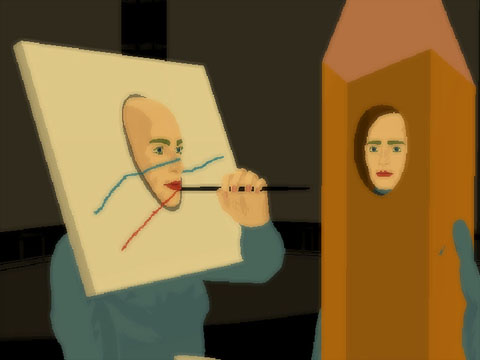Dec
2012
Barry Doupé: The Colors that Combine to Make White are Important

Programmed by Amy Kazymerchyk
Barry Doupé in attendance
In The Colors that Combine to Make White are Important, Vancouver animator Barry Doupé explores the power structure within a failing Japanese glass factory. Two parallel storylines — one involving the investigation of a suspect employee, the other a stolen painting — converge in an exposition on gender and desire. Doupé’s computer-animated film has its characters rapidly evolve through three distinct acts, while subverting the dominant archetypes in the Japanese salaryman genre. The hierarchical relationship between boss and employees is undone to examine language, art, and expression. Doupé’s characters are looking for something only to be found through a crisis of feeling, a shaking up of the human world. The film peeks into another, formerly invisible world, one which wants to know the meaning of the body, the meaning of attraction. Alluding to the office comedy 9 to 5 (1980), Yasujiro Ozu's staid, heartwarming Good Morning (1959), and Luchino Visconti's sexually-charged finale in Death in Venice (1971), Colors shifts between cultural reference points, flattening them out into a dialogue of desperate, over-reaching thoughts and searching inquiries about nature, love, mortality, and consciousness. Colour, computer animation SD video. 119mins.
Barry Doupé, born 1982 in Victoria, B.C., is a Vancouver-based artist primarily working with computer animation. He graduated from Emily Carr University in 2004 with a Bachelor of Media Arts majoring in animation. His films have been screened at various venues across Canada and around the world, including the Ann Arbor Film Festival, International Film Festival Rotterdam, Pleasure Dome (Toronto), MOCCA (Toronto), Whitechapel Gallery (London), and the Tate Modern (London).


